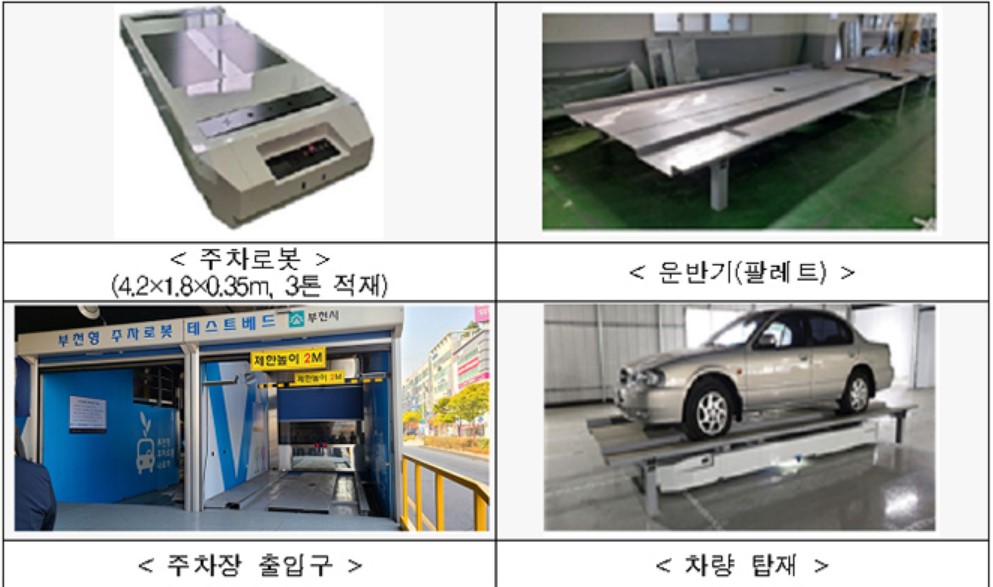Reducing parking time and reducing the risk of safety accidents… Revision of relevant regulations to take effect in September
#Driver A recently suffered a so-called 'Mooncock' accident in which the side of the passenger seat door of a vehicle parked in the parking lot was damaged. However, this problem can be solved by using the self-driving parking robot parking lot. When the driver stops and gets off the car at the entrance of the parking lot, the 'autonomous driving parking robot' automatically parks the car, enabling convenient parking without the inconvenience of getting on and off the car in a narrow parking space or damaging the car next to it.
The Ministry of Land, Infrastructure, and Transport announced on the 26th that it would promote the institutionalization of parking robots, which are operated by receiving special cases of verification of the regulatory sandbox.
MOLIT plans to make an administrative advance notice of the amendment to the 'Regulations on Safety Standards and Inspection Standards for Mechanical Parking Devices' from the 27th of this month to the 17th of the following month, and will be implemented from September this year.
The amendment stipulates the definition of a parking robot and safety and inspection standards necessary for the operation of the parking robot.
MOLIT added 'intelligent parking lot (a parking lot designed to move and park a car by a parking robot)' to the type of mechanical parking lot.
Safety standards necessary for the operation of parking robots have also been newly established, such as a device for manually operating the parking robot in case of emergency, a device to prevent departure of cars loaded in the parking robot, a device to prevent collision between robots and vehicles when two or more parking robots are moving, and a device to immediately stop when an obstacle is detected. .
MOLIT stipulates that the Korea Transportation Safety Authority should conduct a parking robot usage inspection (after installation and before use), regular inspection (every two years after use inspection), and detailed safety inspection (when 2 years have elapsed after installation).

Smart parking robot service based on QR code recognition.
The 'autonomous driving parking robot service' is a service that when a user puts a vehicle in the storage area, the parking robot lifts the carrier and the vehicle together, recognizes the QR code on the floor of the parking lot, and moves to an empty parking area along the path to park.
When the vehicle is shipped out, if the user enters the vehicle number in the delivery area, the parking robot moves the vehicle to the delivery area by autonomous driving.
Currently, the parking robot is being demonstrated at an off-street parking lot in Bucheon City from October 2020. MOLIT verifies the operating system such as location and path recognition of parking robots and safety devices through demonstration and supplements safety.
When a person directly parks in a general (self-propelled) parking lot, it takes time to wander to find an empty parking space, and there is a high risk of contact accidents between people or vehicles and door-cock accidents.
MOLIT expects that the introduction of a parking robot will not only shorten the parking time but also greatly reduce the risk of safety accidents that may occur in the parking lot.
In addition, when introducing a parking robot, there is no need to secure an aisle area for people to get on and off the parking lot, so it is effective to increase the space efficiency by 30% compared to a general (self-propelled) parking lot, an official from MOLIT explained.
Compared to the existing mechanical parking lot, it is expected that the initial installation cost will be reduced by about 20% compared to the mechanical parking lot as it does not require devices such as steel frames, rails, and chains, and various types of parking lot installations are possible.
Jinhwan Yoon, Director General of Transportation Policy at MOLIT, said, "In the era of mobility that responds to the people's customized transportation demand, we will continue to improve the system and strengthen safety management so that the parking robot combined with advanced technology can increase the convenience and safety of parking lot use."



